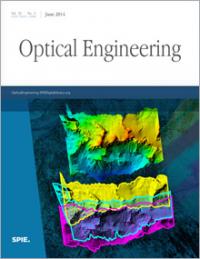A new special section on Human Vision in the current issue of Optical Engineering showcases optics and optical engineering research into new techniques and approaches for the study of human vision and the design of novel imaging systems. Put into practice, these new approaches enable applications such as earlier diagnosis of disease, improved treatment monitoring, and more accurate guidance for treatment and surgery. The journal is published by SPIE, the international society for optics and photonics.
 The June 2014 issue of Optical Engineering contains a special section on Human Vision. Credit: SPIE, the international society for optics and photonics
The June 2014 issue of Optical Engineering contains a special section on Human Vision. Credit: SPIE, the international society for optics and photonics
The special section includes 11 papers that describe how optics is used to investigate human vision, how new methods for correcting or enhancing human vision are developed and evaluated, and how models of human vision can be used to design and evaluate other imaging systems.
Several of the articles describe new optical imaging techniques, such as quantitative anterior segment optical coherence tomography that measures 3D biometry of the cornea and the lens in the front of the eye.
"The human visual system is an exquisitely engineered system that can serve as a model and inspiration for the design of many imaging systems," wrote Eli Peli, Harvard Medical School, in a guest editorial in the special section. "For example, advances in optical sensing and imaging have led to important discoveries about retinal image processing, and optical design tools are necessary for improving vision in patients. While advances in optics are improving our understanding of the human visual system, this understanding has also led to improvements in artificial vision systems, image processing algorithms, visual displays, and even modern optical elements and systems."
Along with Peli, other guest editors of the special section are Susana Marcos, Institute of Optics, Consejo Superior de Investigaciones Cientificas; Stephen Burns, Indiana University; and Joyce Farrell, Stanford University.
Two articles in the section are open access:
- "Intraocular lens alignment from an en face optical coherence tomography image Purkinje-like method" by Mengchan Sun, et al., Institute of Optics, Consejo Superior de Investigaciones Cientificas, reports on new methods of measurement of intraocular lens alignments, which are typically implanted in patients during cataract surgery.
- "Impact of high power and angle of incidence on prism corrections for visual field loss" by Harvard Medical School's Jae-Hyun Jung and Eli Peli analyzes and identifies ways to mitigate issues in treatments that prescribe prisms for visual field expansion -- often patients who have had a stroke or traumatic brain injury.
Other papers in the special section include:
- "Robust classification for occluded ear via Gabor scale feature-based non-negative sparse representation," Baoqing Zhang, University of Science and Technology Beijing, et al.
- "Synthetic aperture wavefront sensing," Salvador Bará, Universidade de Santiago de Compostela, et al.
- "Integrated optical coherence tomography and reflectometry system for ocular anterior segment imaging and tear film thickness evaluation," Hui Lu, et al., University of Miami
- "Hyperemic responses of the optic nerve head blood flow to chromatic equiluminant flicker are reduced by ocular hypertension and early glaucoma," Benedetto Falsini, Università Cattolica Sacro Cuore, et al.
- "User-preferred color temperature adjustment for smartphone display under varying illuminants," Kyungah Choi and Hyeon-Jeong Suk, Korea Advanced Institute of Science and Technology
- "Programmable diffractive lens for ophthalmic application," María Millán, et al., Universitat Politècnica de Catalunya
- "Technical improvements applied to a double-pass setup for performance and cost optimization," Ferran Sanabria, et al., Universitat Politècnica de Catalunya
- "Optometric measurements predict performance but not comfort on a virtual object placement task with a stereoscopic 3D display," John McIntire, U.S. Air Force Research Laboratory, et al.
- "Human vision noise model validation for the U.S. Army sensor performance metric," Bradley Preece, et al., U.S. Army RDECOM CERDEC Night Vision Electronic Sensors Directorate.